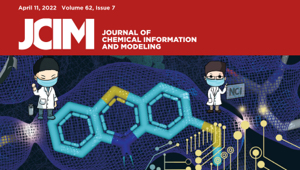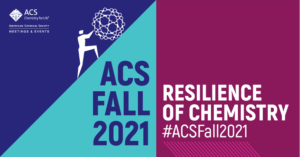
学术合作 | 化学式识别API功能支撑北大团队分子识别和文献检索工作
StoneMIND | Collector产品通过API合作,为北京大学王选计算机研究所的吕肖庆团队提供分子化学结构识别等功能,支持开发了快速且准确检索包含相同或相似图片信息的文献或专利的深度学习模型。相关成果近期在IEEE发表。
Just another WordPress site

StoneMIND | Collector产品通过API合作,为北京大学王选计算机研究所的吕肖庆团队提供分子化学结构识别等功能,支持开发了快速且准确检索包含相同或相似图片信息的文献或专利的深度学习模型。相关成果近期在IEEE发表。

望石智慧提出了一整套以大分子实验电子密度为数据基础的AIDD技术体系,涵盖了基于靶点口袋的3D分子生成技术和基于高精度能量计算的高效筛选体系,近期部分成果被发表在JCIM封面。
The low-voltage activated T-type calcium channels regulate cellular excitability and oscillatory behavior of resting membrane potential which trigger many physiological events and have been implicated with many diseases. Here, we determine structures of the human T-type CaV3.3 channel, in the absence and presence of antihypertensive drug mibefradil, antispasmodic drug otilonium bromide and antipsychotic drug pimozide. CaV3.3 contains a long bended S6 helix from domain III, with a positive charged region protruding into the cytosol, which is critical for T-type CaV channel activation at low voltage. The drug-bound structures clearly illustrate how these structurally different compounds bind to the same central cavity inside the CaV3.3 channel, but are mediated by significantly distinct interactions between drugs and their surrounding residues. Phospholipid molecules penetrate into the central cavity in various extent to shape the binding pocket and play important roles in stabilizing the inhibitor. These structures elucidate mechanisms of channel gating, drug recognition, and actions, thus pointing the way to developing potent and subtype-specific drug for therapeutic treatments of related disorders.
The increasing literature leads to formidable pressure for medical researchers. Most existing recommender approaches mainly depend on text-based information. How to extract and utilize the heterogeneous information, especially the graphic ones, to improve the recommender is worthy of further exploring. To this end, we establish a document-to-document recommender system for medical literature (D2D-MR). Specifically, we proposed HB-GED, the Half-branch GED algorithm, and the bipartite-graph-based algorithm for solving the molecule similarity and the paper similarity, respectively. Experimental results on real-world datasets demonstrate the effectiveness of the proposed recommender system.

近日,经北京市人力资源和社会保障局、全国博士后管委会批准,北京望石智慧科技有限公司(以下简称“望石智慧”)获批设立博士后科研工作站。这是对望石智慧在AI药物研发领域的基础理论研究、创新技术成果和高层次人才培养等方面的重大认可。未来,望石智慧将进一步探索AI制药技术新边界,大力推进产、学、研的新融合。
AIScaffold , a web-based tool for scaffold diversification using the deep generative model, can perform large-scale (up to 500,000 molecules) diversification in several minutes and recommend the top 500 (top 0.1%) molecules. Features such as site-specific diversification are also supported. This tool can facilitate the scaffold diversification process for medicinal chemists, thereby accelerating drug design.
摩根大通(J.P. Morgan)于10月12日-13日在上海成功举办了首届全球医疗健康产业年会上海论坛。望石智慧CEO周杰龙应邀参与“人工智能在医疗领域的前沿应用”的圆桌讨论。
望石智慧与海正药业共同宣布,双方达成合作开发协议。 根据已签署的协议,双方将充分利用各自技术、团队与资源优势,携手开展针对某First-in-Class靶点的抗肿瘤小分子药物的研发。

望石智慧创造性地利用多分辨率电子密度表示分子和非共价相互作用,使PDB中大量的电子云密度数据用于模型训练成为可能,该应用为工业界首次。利用该类型数据、机器学习模型和传统的QTAIM理论, 望石智慧开发了独特的3D生成模型和基于电子云密度的结合模式的分析。该部分技术的最新进展会在会议的Posters中披露。

First Release: Electron Density Based 3D Molecular Generation and Binding Mode